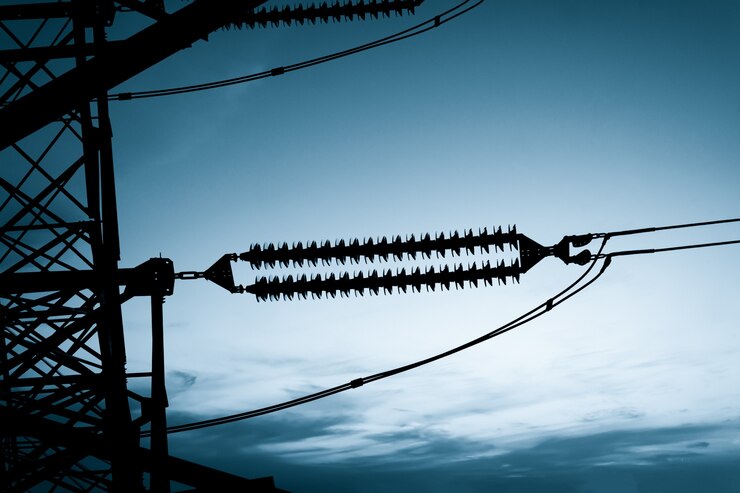Contatc
Transmission Line Standards and Compliance in 2025
2025-02-09
Transmission Line Standards and Compliance: A Guide to Best Practices
Energy distribution networks serve as the key infrastructure backbone that powers contemporary electric power distribution networks. The transmission lines deliver electricity to home industrial and business customers to provide them with power for daily operations. Sophisticated efforts exist to establish and maintain standards and compliance for these systems when transmission lines are involved. Transmission standards together with strict performance and legal requirements make power lines operational while keeping risks at bay.
What are Transmission Line Standards and Compliance?
Technical guidelines referred to as power line standards define the requirements needed to design buildings as well as maintain electricity transmission components. Transmission system safety requirements and environmental management protocols exist within these standards and ensure performance criteria fulfillment. Organizations achieve compliance when they follow established standards and legal regulations which come directly from governing bodies plus industry regulators.
Core Concepts: Why Compliance Matters
Beyond technical specifications, the requirement to follow transmission line standards and compliance exists for wider reasons. Pursuing compliance means achieving safety for the public while protecting the environment and maintaining reliable operation of the power grid. Understanding the reason why compliance achieves importance demands further analysis.
The requirement for transmission line standards and compliance extends beyond mechanical production criteria. Steps to achieve compliance result in public safety together with environmental protection so the reliability of the power grid can be maintained. An investigation of the factors behind compliance importance is necessary for better understanding.
Public and Worker Safety:
Electricity safety standards coupled with operational boundary restrictions alongside proper power line distances protect diverse groups of people including both public communities and operational personnel from injury.
Environmental Protection:
Transmission lines generate considerable environmental impacts on the earth. Multiple types of ecological impacts affecting wildlife disruptions alongside environmental damage to habitats are handled by requirement standards.
Operational Efficiency:
System efficiency increases when conductors follow technical specifications and when insulation requirements and operational items are met thereby reducing system breakdowns and maintenance costs.
Legal and Regulatory Requirements
The IEEE (Institute of Electrical and Electronics Engineers) together with the IEC (International Electrotechnical Commission) operate regulatory bodies to create fundamental transmission line guidelines. Failure to comply with this protocol leads to operational suspension alongside civil proceedings and substantial sanction fees.
Key Transmission Line Standards
The comprehension of transmission line compliance needs a detailed analysis of fundamental technical standards that engineers and construction personnel must respect. The documents specify essential criteria for transmission line components.
All transmission lines need to maintain pre-determined safe distances from both residential and transportation infrastructure to protect human safety and property needs. The regulatory authorities establish specifications through which transmission lines obtain clearance standards based on voltage level and position in the region.
Choosing suitable conductive materials for high-voltage transmission lines represents an essential process because safety along with operational excellence depends on meeting certain material specifications. Transmission line reliability can be achieved by selecting appropriate conductor materials that require proper assessments including conductor size tensile strength and weather-resistant qualities.
The correct setting of insulation prevents electrical faults from happening on transmission lines. Materials used for insulation need to fulfill requirements determined by high voltage together with environmental factors such as temperature changes and humidity in addition to wind effects.
Transmission line towers undergo strategic engineering design since they must carry both conductors and withstand the combined effects of wind pressure besides ice and environmental elements. Following designated design standards leads to the attainment of safe operation and robust construction standards for towers.

How to Ensure Compliance with Transmission Line Standards?
Follows necessary implementation of anticipatory design alongside systematic inspection routines testing systems and well-documented systems to achieve proper transmission line standards compliance. Different inspection procedures enable utilities along with construction teams to maintain their compliance obligations.
- The designs of transmission lines require absolute compliance with specific engineering principles and design standards. The evaluation consists of performing structural evaluations together with geotechnical examinations which must include environmental impact analysis.
- The compliance maintenance process requires performing scheduled inspections to evaluate the transmission lines. The assessments include checks of conductors as well as inspections of towers and assessments of insulation by the staff members. Testing protocols enable power lines to maintain their performance level while ensuring stability.
- After completion of transmission line structures the delegated governmental bodies conduct both certifications and necessary standard audits. Audits check multiple points by examining required documents and checking records of compliance along with onsite property assessments.
- The staff responsible for building and maintaining transmission lines needs specialized training about the existing regulations and construction standards that pertain to their responsibilities. Organizational certifications combined with training programs enable businesses to maintain exemplary compliance across the sector.
Best Practices for Transmission Line Design, Construction, and Maintenance
The following best practices must be implemented during transmission line design as well as construction and maintenance periods for achieving optimal compliance with operational efficiency.
Workers can avoid accidents during transmission line construction phases when strict safety procedures meet worker adherence to safety requirement standards. Workers need regular safety practice sessions accompanied by correct operational training to prevent accidents.
A project should begin its route planning stage before project initialization occurs. The development process requires both land-use plan assessment for environmental impact and clearance test completion. Organizations must properly design their transmission lines to reduce possible compliance issues that will occur in upcoming phases of operation.
Quality towers built with corrosion-resistant materials enable extended service times which leads to decreased operational costs. Organizations that follow established material standards protect themselves against safety accidents.
Durable and Reliable Line Towers for Efficient Power Transmission
Durable and Reliable Line Towers for Efficient Power Transmission
X.Y. Tower produces line towers engineered to be durable with precise components that ensure dependable service. The production of our towers through high-quality materials enables resistance to harsh environmental elements in addition to superior power transmission system operation.
Superior Structural Stability
The exceptional stability of our line towers comes from meeting every industry requirement needed to operate efficiently over extended periods. The operation of various transmission towers includes use in above-ground and sub-surface positions since they are built profoundly durable to uphold their construction integrity until they reach their operational lifespan.
Compliance with Industry Standards
Through strict manufacturing practices, the company makes products that fulfill both transmission line standards and Chinese existing norms. Our Angularsteel towers have been built according to GB/T2694 and our Monopole towers follow DLT646 standard regulations. The product safety standards and international quality and performance requirements remain in place due to our standardized product development process.
Harsh Environment Resistance
Line towers receive long-lasting engineering because they survive severe weather conditions combined with environmental stresses. The robust design of our products reduces operating expenses which results in cost savings during their whole utilization period.
Competitive Pricing and Timely Delivery
Our business offers affordable transmission line tower shipment combined with market-leading prices to become the top choice for high-performance product suppliers. Our company implements a quality commitment framework in every tower production to guarantee maximum safety standards and operational reliability.
Conclusion
Transmission line standards and compliance are critical to the safe and efficient delivery of electricity across the power grid. Adhering to these standards not only ensures safety and reliability but also promotes environmental sustainability and legal compliance. As the industry continues to evolve, utilities, engineers, and contractors must stay updated on regulatory changes and adopt best practices for transmission line design, construction, and maintenance. For more information about transmission line standards and compliance, check out our detailed resources on the latest industry practices at XY Tower.

Hey, I’m Chunjian Shu
"X.Y. Tower: Reliable, innovative solutions for high-quality towers and electrical equipment with professional service.
